I wish I’d had my family here to share this experience with, because this is just the sort of place I can see my relatives booking a room at for special occasions.
I’d never heard of Tan Family Cuisine before, but this is what’s served at Guo Yao Xiao Ju (The Little Place of Guo) — a tiny, unassuming restaurant tucked into a hutong. You wouldn’t really guess from the entrance that this place serves up such fancy and impressive fare.
Tan Family Cuisine originates from a chef named Tan Zongjun, who served in the imperial court during the Qing Dynasty in the 19th century. He loved food so much he often threw elaborate dinner parties with complicated dishes that required long and careful preparation. When his family fortune dwindled due to this lavish spending, he turned their home into a restaurant in order to maintain his lifestyle.
Now, Chef Guo Xinjun, owner of Guo Yao Xiao Ju and one of the fourth generation of Tan-trained chefs, continues this culinary tradition in Beijing. He used to work at the Beijing Hotel and has actually cooked for such heads of state as Deng Xiaoping, as well as Nixon and Clinton.
All of which explains why we felt a little out of place at this restaurant, which was both humble and sophisticated. The space itself is cozy, the size of a typical hutong home, with traditional period-style furniture and artwork. The main room fits two small tables and one large round table. There is also a private room in the back with another large round table. When we were there, both large tables were full, and the groups were drinking wine and in the middle of a banquet.
Even though this is the perfect place to bring a large group for a special meal, smaller parties are definitely welcome as well. (With the limited space, though, a reservation is essential.) We found ourselves at one of the two smaller tables, with a family of four occupying the other. The restaurant has an English menu, and we noticed plenty of seafood and banquet-style dishes on there, as well as smaller, slightly more casual fare.
We definitely wanted to try nongtang yudu, the fish maw soup, which the restaurant is known for. When we tried to order it, though, the waitress seemed to say something like this has to be ordered in large quantities because it can’t be cooked in individual portions (at least, that’s what we thought she said… our Mandarin is not so great). After some confusion, she said she’d simply tack our order on to the next table’s, which was ordering the soup as well.
When the soup arrived, it was just beautiful. I actually have been avoiding seafood on this trip, both because of the pregnancy and because the waters are pretty polluted in China (some people avoid seafood here because of the pollution alone), so we only ordered one bowl, and I just sampled a bit of the soup. From the few sips I had, though, it made complete sense how this dish descends from imperial cuisine. My dad actually makes this soup at home every now and then, usually when guests come over for dinner, but even I have to confess that this was better than anything I’d had at home (sorry, Dad). The soup is a little thick, but not gelatinous, as you might expect from the fish stomach. The liquid is actually boiled down from old chicken, old duck, pork bones, ham, and scallops to create a rich broth, with pieces of spongy fish maw. This little bowl cost 48 RMB.
As an appetizer, we ordered thousand-year yak’s ear, which consisted of crispy ear cartilage gelled in a jelly that I assume is boiled from the collagen (toward the end of the meal, it actually started to melt a bit). This we dipped into a garlic vinegar sauce.
We also ordered the yasi danjuan, shredded smoked duck and chives rolled in a crepe and then fried. This was very fragrant from the chives and the smokiness of the meat.
The last dish, the steamed baby napa cabbage with vermicelli noodles, was our least favorite. It was rather bland and the noodles actually had a bit of a stale taste to them. But it was definitely the exception in an otherwise lovely meal.
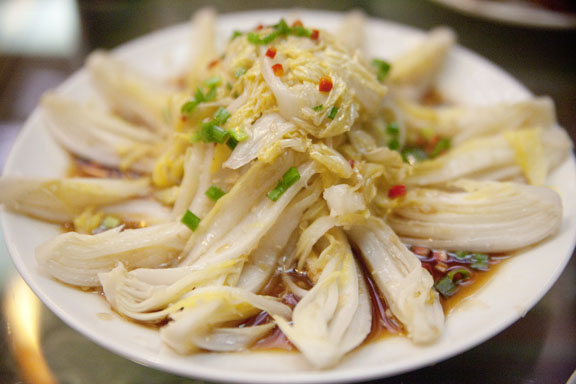
Besides the intimate space and the exquisite food, we also found the staff to be really friendly and kind here. When we had trouble locating the place, one of the ladies called us back (since we had made a reservation and had called when we were lost) and offered to meet us at a main intersection to take us to the restaurant. I’d love to come back here in a larger group for a nice Chinese banquet some day.
Guo Yao Xiao Ju 国肴å°å±…
东城区交é“å£åŒ—三æ¡58å·
58 Jiaodaokou Beisantiao (Jaiodaokou North 3rd Alley, just off Andingmennei Dajie)
Phone: 6403-1940

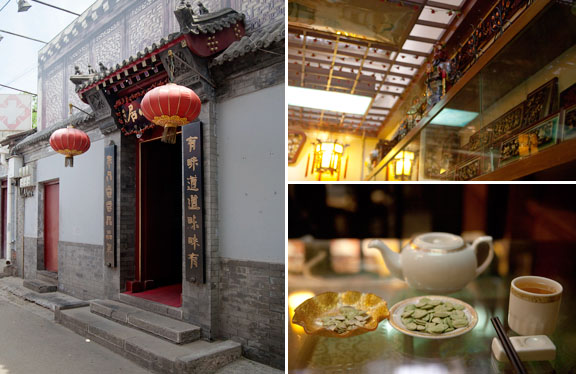
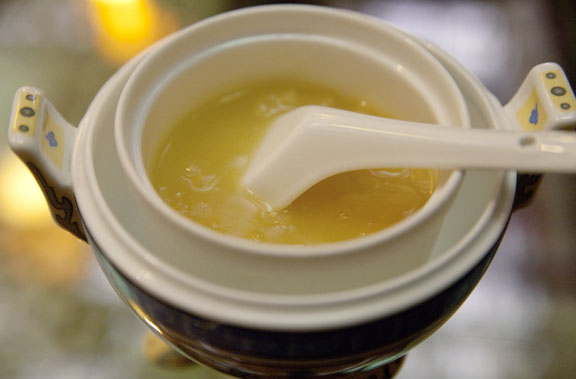
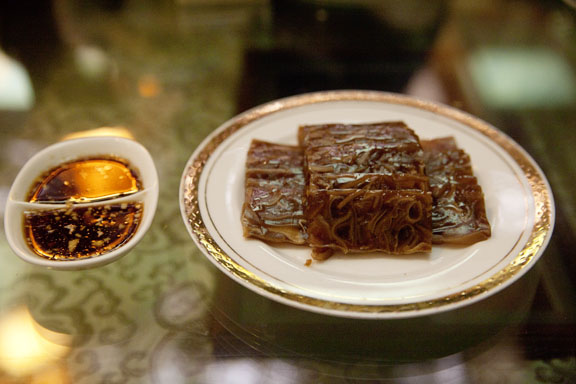








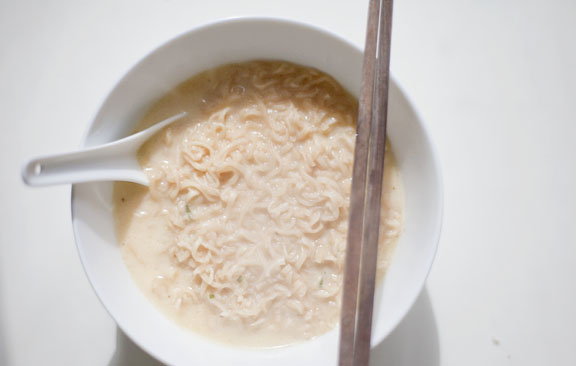












Connect with us